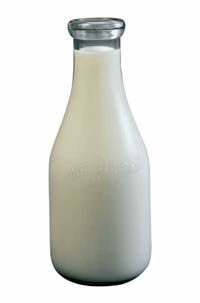More than 28 million Americans are at risk for osteoporosis, and more than 10 million already have been diagnosed with this bone-degenerating disease. Women make up an astounding 80 percent of those who are affected by osteoporosis. Though most people associate osteoporosis with older people, the disease strikes young and old alike. But osteoporosis does become much more common as you age -- affecting one in two women over age 50.
Bone Up on Osteoporosis
As you grow your bones get stronger and longer. By the time you reach the age of 20, you've got 98 percent of your bone mass; by the time you reach your thirtieth birthday, your bones are their strongest. If you were able to take a look inside your bones during those peak years, you'd see a hard outer shell and something that looks like a honeycomb on the inside. About 80 percent of your bone mass is that tough, hard outer bone called cortical bone. The rest of your bone make-up is the honeycomb-like material called trabecular bone. After you hit 30, your bone mass begins to decline. Trabecular bone is typically the first to lose critical density, and as you get older, cortical bone mass also declines, but at a slower pace.
Advertisement
Osteoporosis literally means porous bones. That means someone diagnosed with the disease has lost so much density that there's not much there to hold their bones together, putting them at greater risk for bone breaks and fractures. The National Osteoporosis Foundation calls osteoporosis the "silent disease" because there are virtually no symptoms of bone loss. Unless you're aware of the risk factors and take action, you may not know you have the disease until some benign bump on the garage door turns into a fracture.
Because the symptoms are not obvious, it's important to know whether or not you are at risk. Go to the next page to find out if you are a potential candidate for osteoporosis.
For more information on disorders and symptoms related to osteoporosis, try the following links:
- To see all of our home remedies and the conditions they treat, go to our Home Remedies page.
- Read about ways you can ease arthritis pain yourself on our Home Remedies for Arthritis page.
- If you are worried you might develop painful joints, go to this article on how to prevent arthritis pain.
- Get innovative Home Remedies for Bursitis when you read this article.
This information is solely for informational purposes. IT IS NOT INTENDED TO PROVIDE MEDICAL ADVICE. Neither the Editors of Consumer Guide (R), Publications International, Ltd., the author nor publisher take responsibility for any possible consequences from any treatment, procedure, exercise, dietary modification, action or application of medication which results from reading or following the information contained in this information. The publication of this information does not constitute the practice of medicine, and this information does not replace the advice of your physician or other health care provider. Before undertaking any course of treatment, the reader must seek the advice of their physician or other health care provider. The brand name products mentioned in this publication are trademarks or service marks of their respective companies. The mention of any product in this publication does not constitute an endorsement by the respective proprietors of Publications International, Ltd. or HowStuffWorks.com, nor does it constitute an endorsement by any of these companies that their products should be used in the manner described in this publication.
Advertisement



